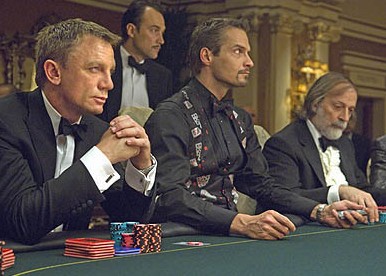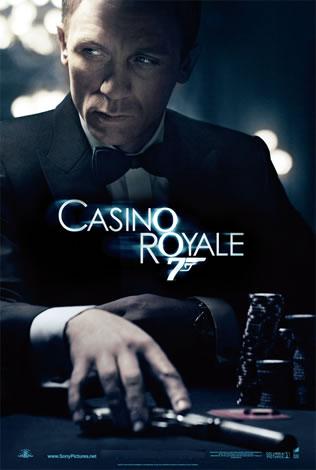| |
The Thunder ChildScience Fiction and Fantasy |
| |
|
|
Bond's partner on the case is Vesper Lynd (Eva Green), an MI6 accountant with a prickly demeanor and disdain for Bond. Her aloofness is maintained until she experiences the brutal reality of Bond's spy work when she softens up and, to slightly paraphrase the "00," becomes woman to him. Vesper's transition from indomitable ice princess to warm-blooded female is handled smoothly and convincingly by Green (Kingdom of Heaven), her dark hair and pale skin suggesting a younger Jennifer Connelly, albeit with large, piercing blue eyes. Bond is still capable of making rash decisions, still developing his skills, still subject to his emotions, still "a blunt instrument." He makes a number of mistakes, but none that are fatal. Actually, when it comes to critical situations, he is an amazingly quick thinker with reflexes to match. This younger, athletic Bond is put through his paces. Director Martin Campbell is no stranger to the action film nor the world of Bond having helmed Goldeneye(1995), The Mask of Zorro(1998) and No Escape(1994). Here, he turns Bond into a world class sprinter in two major action set pieces that hinge on running. There hasn't been such an exciting foot chase since the spectacular sequence in the otherwise abysmal The Night of the Juggler(1980). While Craig (Lara Croft: Tomb Raider, Munich) isn't an exact physical match for Hoagy Carmichael, the singer/songwriter and sometimes actor Fleming used as a comparison, he does have the offbeat, unconventional looks of the man and the slightly beat up demeanor of Fleming himself. At times, his bat ears give the impression that he's about to take flight. But jug ears never hurt Clark Gable and neither do they diminish Craig who convinces us both in formal wear and clinging to the top of a tanker truck.

Poster for the 1967 Casino Royale
Arnold, the hand chosen successor to John Barry, the original composer who forever stamped the series with his signature sound, capably imitates the Barry style, his score heavy with horns. In the quieter moments he nearly achieves a convincing recreation of Barry music from the early days of the series. It is a score that hits the right tone and adds a sense of scale to some of the bigger money shots. The main title theme, sung by Chris Cornell (of the bands Soundgarden, Audioslave, and Temple of the Dog), may not be a particularly memorable song (unlike Barry, songwriting is Arnold's weakness) but is perfectly suitable played against the colorful and rather pretty main title sequence. As most will know already, the Bond theme isn't heard until the end titles. Essential to the success of a Bond film is the villain. Danish Mads Mikkelsen (Tristan in King Arthur) is a quietly forceful menace, his odd, reptilian demeanor chillingly cold and threatening. This character uses an inhaler (as in the book) and occasionally leaks a drop of blood from his tear duct. The actor reminds somewhat of the young Max von Sydow, emotionally remote when serious, but warm and friendly when smiling. Italian Giancarlo Giannini (Swept Away, Seven Beauties, Darkness) essays the role of Mathis (a Frenchman in the novel) and Jeffrey Wright (Syriana, Lady in the Water) takes on Bond's U.S. friend and CIA operative Felix Leiter. Judi Dench returns as M but Q and Miss Moneypenny are left out of this adventure. The international flavor of the cast is a typical feature of a Bond film, the producers casting far and wide in their search for interesting faces and global appeal.
 Daniel Craig as James Bond at far left.
If possible, see Casino Royale in a DLP equipped theater. The absolutely perfect picture, stunning in its detail and clarity, devoid of dirt, splices, lines or any other distracting artifacts, effortlessly remains in focus throughout and allows a deeper viewer immersion in the film than conventional 35mm screenings. Regardless of where it's seen, though, this Bond film may be a winning hand for fans and non-fans alike.
|
Recommended Reading
|
All text © 2006 The Thunder Child unless otherwise credited.
All illustrations retain original copyright.
Please contact us with any concerns as to correct attribution.
Any questions, comments or concerns contact The Thunder Child.
